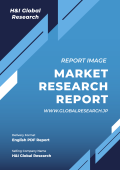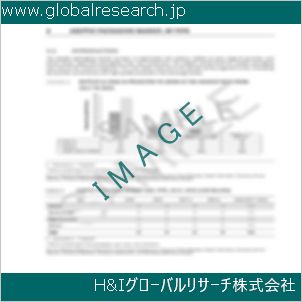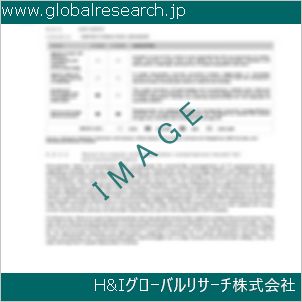1 LED Glass Substrate Market Overview
1.1 Product Definition
1.2 LED Glass Substrate Segment by Type
1.2.1 Global LED Glass Substrate Market Value Growth Rate Analysis by Type 2022 VS 2029
1.2.2 Single Layer Single Layer
1.2.3 Single-sided Multi-layer
1.2.4 Multi-sided Multi-layer
1.3 LED Glass Substrate Segment by Application
1.3.1 Global LED Glass Substrate Market Value Growth Rate Analysis by Application: 2022 VS 2029
1.3.2 Consumer Electronics
1.3.3 Car Display
1.3.4 Commercial Display
1.3.5 Others
1.4 Global Market Growth Prospects
1.4.1 Global LED Glass Substrate Production Value Estimates and Forecasts (2018-2029)
1.4.2 Global LED Glass Substrate Production Capacity Estimates and Forecasts (2018-2029)
1.4.3 Global LED Glass Substrate Production Estimates and Forecasts (2018-2029)
1.4.4 Global LED Glass Substrate Market Average Price Estimates and Forecasts (2018-2029)
1.5 Assumptions and Limitations
2 Market Competition by Manufacturers
2.1 Global LED Glass Substrate Production Market Share by Manufacturers (2018-2023)
2.2 Global LED Glass Substrate Production Value Market Share by Manufacturers (2018-2023)
2.3 Global Key Players of LED Glass Substrate, Industry Ranking, 2021 VS 2022 VS 2023
2.4 Global LED Glass Substrate Market Share by Company Type (Tier 1, Tier 2 and Tier 3)
2.5 Global LED Glass Substrate Average Price by Manufacturers (2018-2023)
2.6 Global Key Manufacturers of LED Glass Substrate, Manufacturing Base Distribution and Headquarters
2.7 Global Key Manufacturers of LED Glass Substrate, Product Offered and Application
2.8 Global Key Manufacturers of LED Glass Substrate, Date of Enter into This Industry
2.9 LED Glass Substrate Market Competitive Situation and Trends
2.9.1 LED Glass Substrate Market Concentration Rate
2.9.2 Global 5 and 10 Largest LED Glass Substrate Players Market Share by Revenue
2.10 Mergers & Acquisitions, Expansion
3 LED Glass Substrate Production by Region
3.1 Global LED Glass Substrate Production Value Estimates and Forecasts by Region: 2018 VS 2022 VS 2029
3.2 Global LED Glass Substrate Production Value by Region (2018-2029)
3.2.1 Global LED Glass Substrate Production Value Market Share by Region (2018-2023)
3.2.2 Global Forecasted Production Value of LED Glass Substrate by Region (2024-2029)
3.3 Global LED Glass Substrate Production Estimates and Forecasts by Region: 2018 VS 2022 VS 2029
3.4 Global LED Glass Substrate Production by Region (2018-2029)
3.4.1 Global LED Glass Substrate Production Market Share by Region (2018-2023)
3.4.2 Global Forecasted Production of LED Glass Substrate by Region (2024-2029)
3.5 Global LED Glass Substrate Market Price Analysis by Region (2018-2023)
3.6 Global LED Glass Substrate Production and Value, Year-over-Year Growth
3.6.1 North America LED Glass Substrate Production Value Estimates and Forecasts (2018-2029)
3.6.2 Europe LED Glass Substrate Production Value Estimates and Forecasts (2018-2029)
3.6.3 China LED Glass Substrate Production Value Estimates and Forecasts (2018-2029)
3.6.4 Japan LED Glass Substrate Production Value Estimates and Forecasts (2018-2029)
3.6.5 South Korea LED Glass Substrate Production Value Estimates and Forecasts (2018-2029)
4 LED Glass Substrate Consumption by Region
4.1 Global LED Glass Substrate Consumption Estimates and Forecasts by Region: 2018 VS 2022 VS 2029
4.2 Global LED Glass Substrate Consumption by Region (2018-2029)
4.2.1 Global LED Glass Substrate Consumption by Region (2018-2023)
4.2.2 Global LED Glass Substrate Forecasted Consumption by Region (2024-2029)
4.3 North America
4.3.1 North America LED Glass Substrate Consumption Growth Rate by Country: 2018 VS 2022 VS 2029
4.3.2 North America LED Glass Substrate Consumption by Country (2018-2029)
4.3.3 United States
4.3.4 Canada
4.4 Europe
4.4.1 Europe LED Glass Substrate Consumption Growth Rate by Country: 2018 VS 2022 VS 2029
4.4.2 Europe LED Glass Substrate Consumption by Country (2018-2029)
4.4.3 Germany
4.4.4 France
4.4.5 U.K.
4.4.6 Italy
4.4.7 Russia
4.5 Asia Pacific
4.5.1 Asia Pacific LED Glass Substrate Consumption Growth Rate by Region: 2018 VS 2022 VS 2029
4.5.2 Asia Pacific LED Glass Substrate Consumption by Region (2018-2029)
4.5.3 China
4.5.4 Japan
4.5.5 South Korea
4.5.6 China Taiwan
4.5.7 Southeast Asia
4.5.8 India
4.6 Latin America, Middle East & Africa
4.6.1 Latin America, Middle East & Africa LED Glass Substrate Consumption Growth Rate by Country: 2018 VS 2022 VS 2029
4.6.2 Latin America, Middle East & Africa LED Glass Substrate Consumption by Country (2018-2029)
4.6.3 Mexico
4.6.4 Brazil
4.6.5 Turkey
5 Segment by Type
5.1 Global LED Glass Substrate Production by Type (2018-2029)
5.1.1 Global LED Glass Substrate Production by Type (2018-2023)
5.1.2 Global LED Glass Substrate Production by Type (2024-2029)
5.1.3 Global LED Glass Substrate Production Market Share by Type (2018-2029)
5.2 Global LED Glass Substrate Production Value by Type (2018-2029)
5.2.1 Global LED Glass Substrate Production Value by Type (2018-2023)
5.2.2 Global LED Glass Substrate Production Value by Type (2024-2029)
5.2.3 Global LED Glass Substrate Production Value Market Share by Type (2018-2029)
5.3 Global LED Glass Substrate Price by Type (2018-2029)
6 Segment by Application
6.1 Global LED Glass Substrate Production by Application (2018-2029)
6.1.1 Global LED Glass Substrate Production by Application (2018-2023)
6.1.2 Global LED Glass Substrate Production by Application (2024-2029)
6.1.3 Global LED Glass Substrate Production Market Share by Application (2018-2029)
6.2 Global LED Glass Substrate Production Value by Application (2018-2029)
6.2.1 Global LED Glass Substrate Production Value by Application (2018-2023)
6.2.2 Global LED Glass Substrate Production Value by Application (2024-2029)
6.2.3 Global LED Glass Substrate Production Value Market Share by Application (2018-2029)
6.3 Global LED Glass Substrate Price by Application (2018-2029)
7 Key Companies Profiled
7.1 AGC
7.1.1 AGC LED Glass Substrate Corporation Information
7.1.2 AGC LED Glass Substrate Product Portfolio
7.1.3 AGC LED Glass Substrate Production, Value, Price and Gross Margin (2018-2023)
7.1.4 AGC Main Business and Markets Served
7.1.5 AGC Recent Developments/Updates
7.2 NEG
7.2.1 NEG LED Glass Substrate Corporation Information
7.2.2 NEG LED Glass Substrate Product Portfolio
7.2.3 NEG LED Glass Substrate Production, Value, Price and Gross Margin (2018-2023)
7.2.4 NEG Main Business and Markets Served
7.2.5 NEG Recent Developments/Updates
7.3 AvanStrate
7.3.1 AvanStrate LED Glass Substrate Corporation Information
7.3.2 AvanStrate LED Glass Substrate Product Portfolio
7.3.3 AvanStrate LED Glass Substrate Production, Value, Price and Gross Margin (2018-2023)
7.3.4 AvanStrate Main Business and Markets Served
7.3.5 AvanStrate Recent Developments/Updates
7.4 Corning
7.4.1 Corning LED Glass Substrate Corporation Information
7.4.2 Corning LED Glass Substrate Product Portfolio
7.4.3 Corning LED Glass Substrate Production, Value, Price and Gross Margin (2018-2023)
7.4.4 Corning Main Business and Markets Served
7.4.5 Corning Recent Developments/Updates
7.5 LG Chem
7.5.1 LG Chem LED Glass Substrate Corporation Information
7.5.2 LG Chem LED Glass Substrate Product Portfolio
7.5.3 LG Chem LED Glass Substrate Production, Value, Price and Gross Margin (2018-2023)
7.5.4 LG Chem Main Business and Markets Served
7.5.5 LG Chem Recent Developments/Updates
7.6 Wg Tech
7.6.1 Wg Tech LED Glass Substrate Corporation Information
7.6.2 Wg Tech LED Glass Substrate Product Portfolio
7.6.3 Wg Tech LED Glass Substrate Production, Value, Price and Gross Margin (2018-2023)
7.6.4 Wg Tech Main Business and Markets Served
7.6.5 Wg Tech Recent Developments/Updates
7.7 Tunghsu Optoelectronic
7.7.1 Tunghsu Optoelectronic LED Glass Substrate Corporation Information
7.7.2 Tunghsu Optoelectronic LED Glass Substrate Product Portfolio
7.7.3 Tunghsu Optoelectronic LED Glass Substrate Production, Value, Price and Gross Margin (2018-2023)
7.7.4 Tunghsu Optoelectronic Main Business and Markets Served
7.7.5 Tunghsu Optoelectronic Recent Developments/Updates
7.8 IRICO Group
7.8.1 IRICO Group LED Glass Substrate Corporation Information
7.8.2 IRICO Group LED Glass Substrate Product Portfolio
7.8.3 IRICO Group LED Glass Substrate Production, Value, Price and Gross Margin (2018-2023)
7.8.4 IRICO Group Main Business and Markets Served
7.7.5 IRICO Group Recent Developments/Updates
7.9 Micron Optoelectronics
7.9.1 Micron Optoelectronics LED Glass Substrate Corporation Information
7.9.2 Micron Optoelectronics LED Glass Substrate Product Portfolio
7.9.3 Micron Optoelectronics LED Glass Substrate Production, Value, Price and Gross Margin (2018-2023)
7.9.4 Micron Optoelectronics Main Business and Markets Served
7.9.5 Micron Optoelectronics Recent Developments/Updates
8 Industry Chain and Sales Channels Analysis
8.1 LED Glass Substrate Industry Chain Analysis
8.2 LED Glass Substrate Key Raw Materials
8.2.1 Key Raw Materials
8.2.2 Raw Materials Key Suppliers
8.3 LED Glass Substrate Production Mode & Process
8.4 LED Glass Substrate Sales and Marketing
8.4.1 LED Glass Substrate Sales Channels
8.4.2 LED Glass Substrate Distributors
8.5 LED Glass Substrate Customers
9 LED Glass Substrate Market Dynamics
9.1 LED Glass Substrate Industry Trends
9.2 LED Glass Substrate Market Drivers
9.3 LED Glass Substrate Market Challenges
9.4 LED Glass Substrate Market Restraints
10 Research Finding and Conclusion
11 Methodology and Data Source
11.1 Methodology/Research Approach
11.1.1 Research Programs/Design
11.1.2 Market Size Estimation
11.1.3 Market Breakdown and Data Triangulation
11.2 Data Source
11.2.1 Secondary Sources
11.2.2 Primary Sources
11.3 Author List
11.4 Disclaimer
| ※参考情報 LEDガラス基板は、LED(発光ダイオード)技術の発展に伴い、光源や表示デバイスとしての機能を持つ重要な素材として注目されています。ここでは、LEDガラス基板の概念を詳細に説明し、その定義、特徴、種類、用途、関連技術などを紹介します。 LEDガラス基板とは、LEDチップを実装するための基板の一種であり、その基板の主要材料としてガラスを使用していることが特徴です。LED技術は、エネルギー効率の良い光源として広く利用されていることから、LEDガラス基板も各種照明や表示装置において重要な役割を果たします。この基板は、通常のFR4(ガラスエポキシ基板)などの金属製やプラスチック製の基板とは異なり、高い透明度と優れた熱特性を持っています。 LEDガラス基板の主な特徴の一つは、優れた熱伝導性です。LEDは動作中に熱を発生するため、熱管理は非常に重要です。ガラス基板は熱を効果的に散逸させることができ、LEDの性能を最大限に引き出す助けとなります。また、ガラスは化学的に安定しており、耐久性が高いため、環境に対する耐性も備えています。このため、LEDガラス基板は長期間にわたり高い性能を維持できます。 次に、LEDガラス基板の種類について考察します。一般的には、シングルレイヤーおよびマルチレイヤーの構造があります。シングルレイヤーのガラス基板は、一つのガラス層で構成されており、比較的容易に製造できますが、高い熱管理能力を必要とするアプリケーションにはやや不十分です。一方、マルチレイヤーのガラス基板は、複数のガラス層や異なる材料を組み合わせることで、熱伝導性や透明度を向上させることができます。このように、基板の構造によって異なる特性を持たせることが可能です。 LEDガラス基板の用途は非常に多岐にわたります。主な用途としては、照明、ディスプレイデバイス、スマートデバイス、ウェアラブルデバイスなどが挙げられます。照明分野では、LEDガラス基板はオフィスや家庭用の照明器具に使用され、エネルギー効率が高く、持続可能なライティングソリューションとして人気があります。また、ディスプレイデバイスでは、LEDガラス基板が液晶ディスプレイやOLEDパネルの背面で使用され、高品質な画像や動画の表示を可能にします。さらに、スマートデバイスやウェアラブルデバイスの中にもLEDガラス基板が採用されており、軽量で薄型の設計が求められる場面でも有効です。 関連技術としては、LEDガラス基板の製造プロセスや表面処理技術が挙げられます。製造プロセスには、ガラス素材の成形、薄膜コーティング、ハンダ付け技術などが含まれます。この中で、特に薄膜コーティング技術は、基板の表面に反射防止膜や防汚膜を施すことで、光の透過率を向上させ、耐久性を増すことができます。これによって、ガラス基板の性能をさらに高めることが可能です。 近年、持続可能性が重視される中で、LEDガラス基板のリサイクル技術も進化しています。ガラスは再利用が可能な素材であり、環境負荷を低減するための取り組みが進められています。特に、LEDとガラスの相性の良さから、より効率的な資源利用が期待されています。 最後に、今後のLEDガラス基板の展望について考えます。技術の進化や新しい材料の登場により、より高性能なガラス基板が開発される可能性があります。また、スマートシティの実現に向けて、照明技術としてのLEDの役割はますます重要となりますので、その中でLEDガラス基板も高度化することが求められるでしょう。省エネルギーや環境への配慮といった面からも、ますますその重要性が増すことが予想されます。 このように、LEDガラス基板は多様な特性と形式を持ち、照明やディスプレイ、それに関連する技術発展の中で中心的な役割を果たしています。未来に向けての持続可能な社会の構築に寄与する存在として、今後もその可能性は広がるでしょう。 |
❖ 免責事項 ❖
http://www.globalresearch.jp/disclaimer












